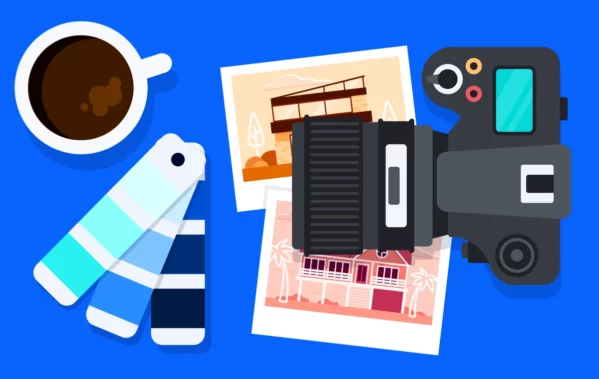Best email marketing tips for builders in 2024
Pop quiz. What’s easy, cheap and has practically limitless sales potential?
Email marketing.
If done right, emails can turn your sales funnel piping hot, converting lead after lead almost entirely on autopilot.
But that’s easier said than done.
Last year, construction emails had one of the lowest open rates across industries. To make matters worse, the bounce rate, which measures the number of emails not successfully delivered to recipient inboxes, was second-highest at 1.12%.
If you want to rise above the competition and build a healthy sales pipeline, redefining your email strategy might be your best way out.
In this blog, we explore five practical construction email templates and discuss best practices to optimize outbound email communication in 2024.
Best practices for construction email communication
Here are a few recommendations construction businesses can follow to enhance email communication:
Personalization and customization
Consistency in communication, both verbal and written, is essential. You can’t chat prospects up over the phone like their high school best friend and then email them sounding like you’re investigating them for tax fraud.
Personalized emails retain warmth in communication, increase open and click-through rates, and provide overall superior customer experiences.
So before you shoot off some cookie-cutter email, read it out loud.
You can improve it by:
- Starting with the first thing prospects see when they receive an email from you. Personalize subject lines with their or their company’s name.
- Using a conversational tone throughout and making references to prospect data points to come up with openers.
- Pepping up your copy with references to recent achievements, blog posts or trademark brand traits and how you can help them further or maintain these.
Clear, concise language
Nobody ever opens a business email disappointed it wasn’t written by the next Charles Dickens. Because in email copy, as with most other forms of business communication, less is more.
Don’t use forty words when you can use five. Your sentences should be crisp and clear, with only relevant details.
Avoid technical jargon as it can sound pretentious and unnecessary, confuse leads and create friction. Instead, stick to everyday language and swap out vague phrasing for concrete details.
Use percentage terms, dollar figures, day/month timelines, etc., to show potential customers you’d like to build relationships based on clear communication.
Break up large chunks of text with bullet points, numbered lists and tables and choose active voice over passive voice wherever possible.
Mobile-friendly formatting
Nearly four out of 10 business emails are read on mobile devices. This means that emails that are too lengthy, have images that don’t scale properly or take too long to load are going to have poor readership stats.
To ensure your emails have higher chances of being opened, read and engaged with:
- Keep image size under 500 KB to ensure quick loading times. Alt text makes emails understandable to users that have enabled image-blocking.
- Single-column layouts with text broken up into smaller paragraphs are scalable and display well across different screen sizes.
- Mobile apps and browsers display up to 30 characters, so trim your subject line, or at least aim to use impactful words at the beginning where they can catch the reader’s eye.
- Compelling preheader text can also improve open rates.
Timely responses
In the last few years, automation, AI and chatbots have made 24/7 customer service the norm in most industries.
But it’s not just customers that win with fast replies. They’re also crucial in ensuring faster deal closure.
Try to send your emails at the start of your working hours so that you can address responses as they arrive.
Use automated responses to reassure a prospect if they email you outside of working hours, and AI-suggested templates to draft faster responses to concerns and queries. And create templates of your own to avoid spending hours crafting the perfect reply.
For example, a pre-built template containing case studies, or testimonials from previous clients can reassure skeptical prospects.
A/B testing for optimization
A/B tests compare two versions of an email to see which one performs better. They’re particularly useful when finalizing subject lines, visual elements and CTAs, and determining their impact on various KPIs of your emails.
The goal of A/B testing can be general, to see which email is most likely to get opened, clicked on and converted, or specifically to address a sub-standard metric, say for example, average reading time.
You can use the data generated by the A/B test to see what’s working and what isn’t, and make changes to your outreach campaigns to increase chances of positive reception.
Construction email templates [with examples]
Check out the five types of email templates below with tips and examples included.
1. Project inquiry email
This type of email needs to hit the right notes, with an effective subject line containing the prospect’s name and should avoid a preachy introduction.
This versatile email can be used in introductory emails, replies to inquiries and to reach out to website visitors.
To ensure smooth communication, consider using an email checker to validate the recipient’s email address before sending your inquiry email.
If you want to make a template from scratch, use the following elements:
- Personalized subject line
- Icebreaker
- Question about pain point
- Social proof
- Compelling CTA
2. Bid submission email
You can alter the email length to suit your requirements, and build your email around these points:
- Thank them for the invitation or opportunity
- Link to the detailed proposal
- Include a summary of the scope, timeline and price
- Express availability for any further details or questions
Subject line: Ready to build the {project} of your dreams?
Hi {first_name},
Hope you’re doing well. We wanted to take this moment to tell you how excited we are about the opportunity to help you in creating {proposal}.
With our {x} years of experience in providing reliable, on-time and within-budget {list services provided}, I can assure you’ll be pleased with the results.
We‘ve submitted our bid through the form on your website, and you can also view the proposal here. Here’s a brief rundown of what to expect:
Scope of Work:
Timeline:
Pricing:
Team & Expertise:
What sets us apart:
Thank you for considering us as your construction partner. We truly believe in the value we can bring and are beyond thrilled to work with you.
If you need any clarifications or documentation, or have any additional information to share, feel free to contact me on {email/cell}.
Look forward to hearing from you.
3. Follow-up email after meeting
If you’ve been met with radio silence after submitting your bid, use this template to tackle tough questions head-on.
A follow-up email should do more than just press for an answer. Ideally, it should:
- Inquire about the reason for the delay
- Preemptively clarify concerns or reinforce the value proposition
- Ask if it would be more convenient to conduct further follow-ups with another person in the organization
4. Project update email
Project update emails should always be straightforward and provide a detailed report.
They should:
- Have a clear subject line.
- Explain the cause for delay/status of project.
- Link to the status report.
- Outline next steps.
- Express availability for a meeting.
Subject line: Progress Report/Delay in Project Schedule
Hello {first_name},
How are you? I just wanted to touch base about the status of the {____} project.
1. [We’re currently running {(__) weeks} behind schedule due to {circumstances causing delay}. Our team is working tirelessly to close the gap as much and as soon as possible so we can get the project back on track.
I’ve enclosed the revised timeline alongside the original in this report. It‘s subject to change based on further developments, so I’ll be sending you weekly updates to keep you informed.]
OR
2. [I’m pleased to inform you that we’re right on schedule with the {project title}. We just crossed the __% completion stage and should be ready with the final product by {estimated date of completion}.
I’ve enclosed a detailed report for your review.]
If you’d like to get on a call to discuss this, please reach out at {contact details}.
5. Post-project feedback email
Use these elements as building blocks for your feedback request email:
- Congratulate the customer on project completion and thank them for their trust.
- Explain why their feedback is important.
- Give them a time estimate for completion (preferably under three minutes).
- Provide a link or questions in the copy itself.
- Use low-friction CTAs like ‘Fill out a quick survey‘ or ‘Did we do okay?‘
Subject line: How did we do, {first_name}?
And that’s a wrap! Congratulations to you and the team at {prospect_company} on your new {project name}. We hope you like it as much as we enjoyed creating it for you.
1. [Your feedback makes us better, so can you take a quick minute to answer this survey?]
OR
2. [We’re putting together some customer testimonials for our website, and we’d love to feature yours. Could you share your review please?]
Thanks in advance!
Harnessing the power of emails for rapid growth
The templates and tips discussed here will help you:
- Make front-end email correspondence more efficient and effective
- Save you hundreds of hours in drafting emails from scratch
- And replicate past customer success with tried-and-test email sequences.
Once you’ve finalized your templates, run the email addresses on your list through email finder and email verification services to locate accurate contact information and ensure the deliverability of your emails. Then add the templates and updated contact details to Buildertrend’s email automation feature to streamline communication and close deals faster.
Buildertrend can help with your email marketing
Our leading platform has the sales tools you need to collect lead information and communicate effectively with each prospective client via email. Builders can create email campaigns and send them right from our platform with personalized branding. Schedule a demo today to see how.

8 strategies for established contractors facing new competition
We’ve got a strategy-packed article with eight tips on how established contractors can stand out from the competition of new builders.

How to showcase your company’s capabilities
Learn how investing in marketing tactics like professional photography, resource-rich websites, case studies and client testimonials can ensure success for your business.

20 construction marketing ideas for 2024
Marketing is crucial for construction businesses to promote their services and attract customers. Click here for construction marketing ideas and examples.
Want to contribute to our blog?
We believe in building a community for construction – sharing is a big part of that. If you have industry expertise or a story to tell, your voice can reach thousands here.

